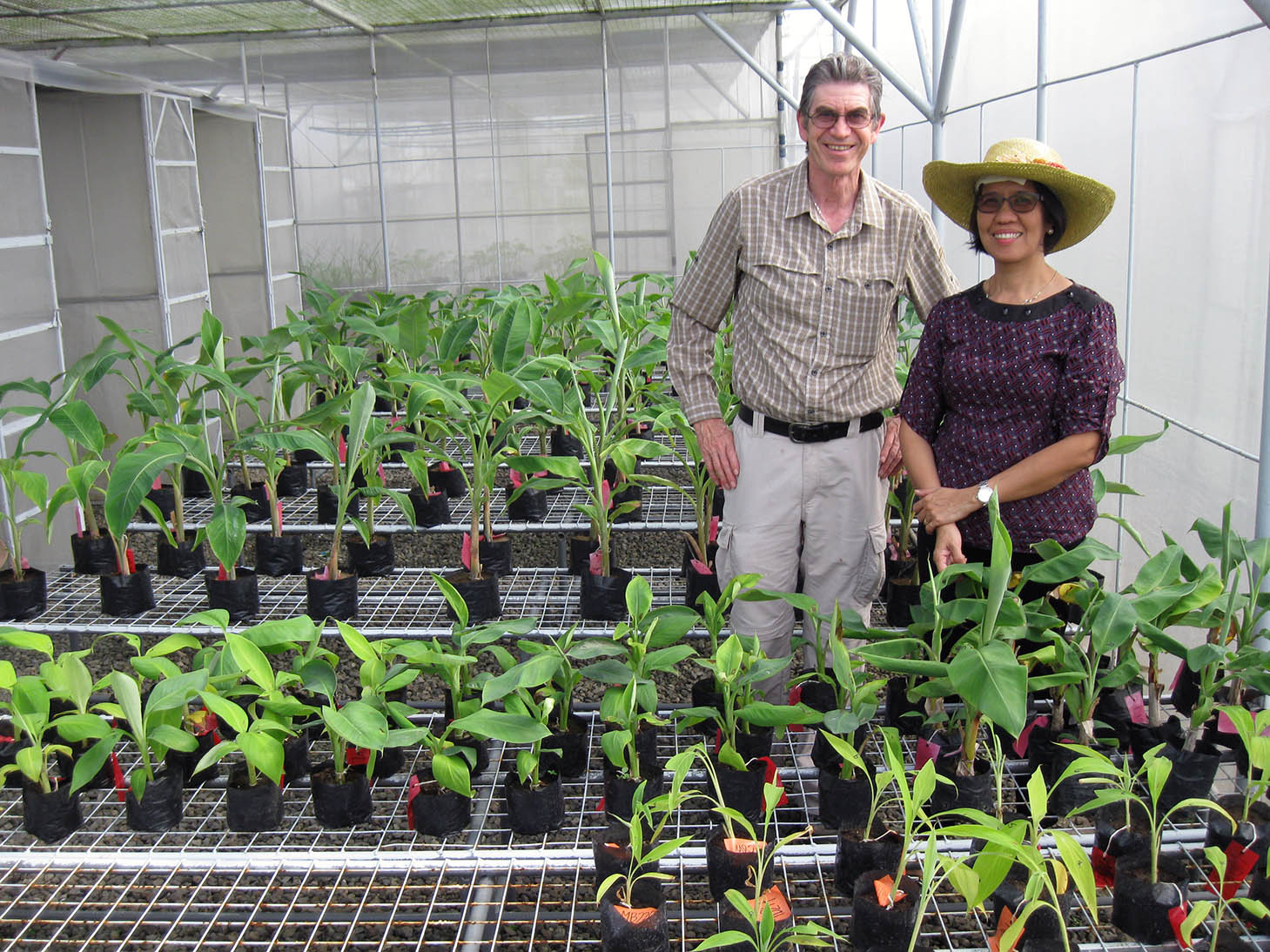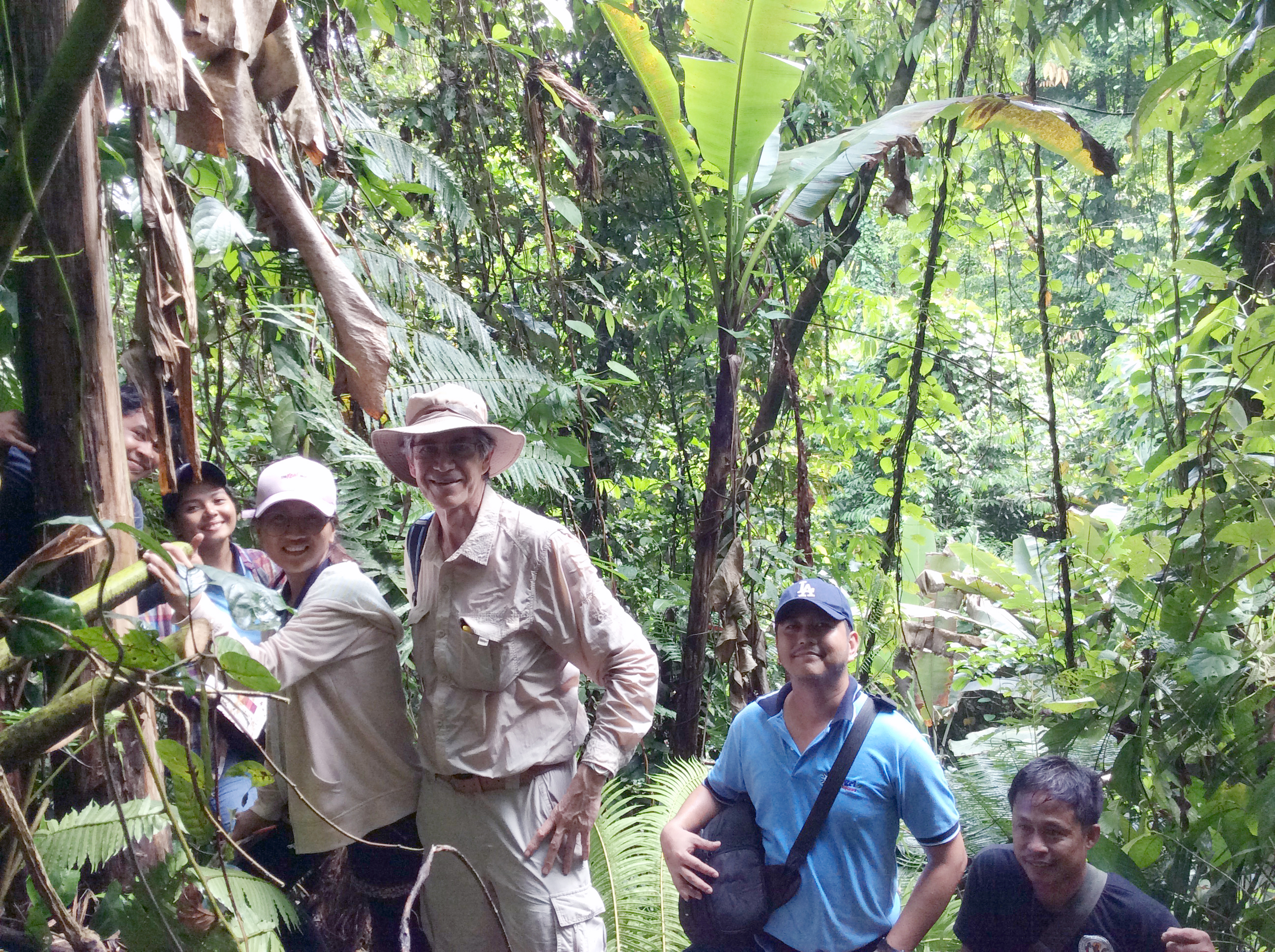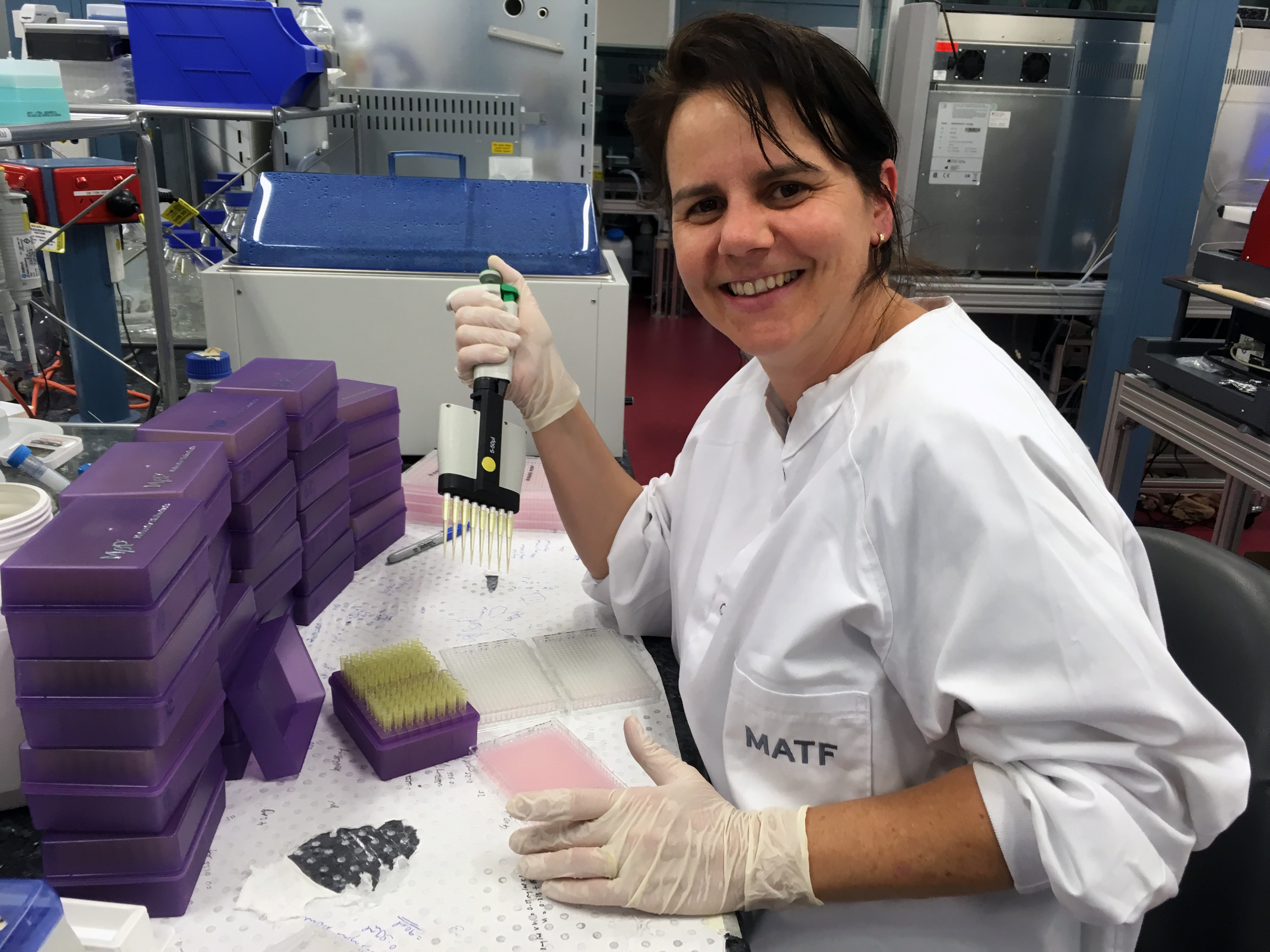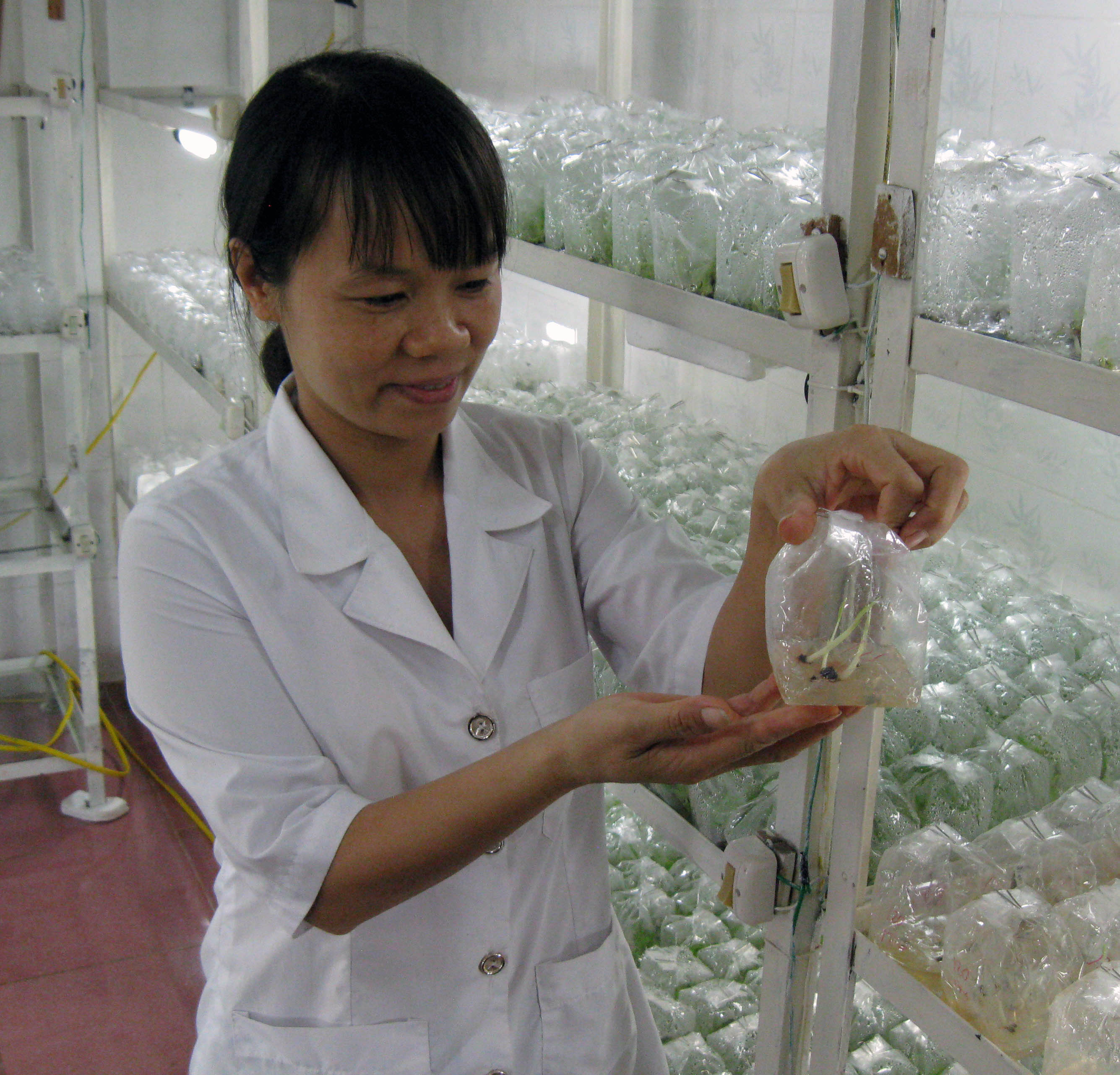The devastating Banana Bunchy Top Virus nearly wiped out Queensland’s banana industry over 100 years ago. But an international team of researchers, aided by funding from the Bill & Melinda Gates Foundation and led by The University of Queensland’s Associate Professor John Thomas, have developed promising strategies to protect this key food source for communities in sub-Saharan Africa and prevent further spread of the disease.
It’s not just humans that benefit from ‘flattening the curve’ of virus transmission during a pandemic. The same premise is at work defending global food security from viruses that can decimate agricultural production systems.
Agricultural pandemics are especially alarming when they affect staples that provide the base to diets around the world. Among the 10 top staples – which includes bread, wheat and rice – are bananas, albeit in the form of ‘plantain’ or cooking varieties.
While recent attention has focused on the Fusarium Tropical Race 4 fungus that causes Banana Panama Disease, Queensland scientists are tackling another potentially equally devastating banana disease – banana bunchy top virus (BBTV).

“Bunchy top almost wiped out Queensland’s banana industry more than 100 years ago," says Associate Professor John Thomas, from the Queensland Alliance for Agriculture and Food Innovation (QAAFI), who coordinates the international project and its participating 15 research institutes.
Banana bunchy was first identified in Fiji in 1889 and has spread around the world in infected plant material.
“The virus is controllable and with considerable effort you can get rid of it in a defined area, but history shows us that once the disease is established in one place it usually stays there, so our aim with this project was to get on top of this disease once and for all.”
Bunchy top has been effectively controlled for Australia’s $600 million banana industry based on a long history of advanced R&D efforts. In 2016, this expertise was tapped into by the Bill & Melinda Gates Foundation to help protect banana plantations among subsistence farmers in sub-Saharan Africa.
BBTV is transmitted to banana plants by aphids. The infection is devastating for farmers as it prevents banana bunches from forming from that point onwards. The virus can also infect nurseries that produce planting material.
“Despite upward of 1000 different banana cultivars grown around the world, not one has proven immune to BBTV,” Associate Professor Thomas says.

“This is especially concerning given that 85 per cent of bananas produced globally are consumed locally. The volume of food at risk from BBTV is staggering when you consider that the remaining 15 per cent of banana production makes up the largest volume of any fruit traded globally.”
The approach being taken to defend plantations of impacted villagers is multi-pronged. It encompasses virus diagnostic tools, monitoring, the removal of infected plantations, the capacity to produce clean planting material and a promising quest to source banana genes that offer resistance to BBTV infection.
On all fronts, impressive gains have been made. In the process, three new disease control approaches have been developed:
- diagnostic antibodies for field epidemiological studies, including among subsistence farming areas in Africa and Asia;
- modelling that can simulate years of field trials normally needed to identify optimal control strategies; and
- the ability to identify BBTV resistance sources in wild banana species.
Test and detect
Associate Professor Thomas says The University of Queensland leads the world in the development of diagnostic antibody tools for BBTV. These are based on advanced virological studies. Included are cultured cells that produced the BBTV-specific antibodies used diagnostically around the world for the past 30 years.

Funding by the Bill & Melinda Gates Foundation permitted a fresh batch of this exhausted resource to be developed. DNA diagnostic capability was also developed along with colleagues at the International Institute of Tropical Agriculture (IITA) in Nigeria.
“When used in an ELISA assay, antibodies provide a robust and reliable test that can be performed even in poorly equipped laboratories,” Associate Professor Thomas says.
Widespread and growing infection rates have been detected, especially in Africa. Impacts can be devastating, with infection rates of up to 50 to 90 per cent of plants detected.
“BBTV has been so destructive that villagers are transporting bananas to market on bicycles where once they would have used trucks,” Associate Professor Thomas says.
Pilot studies in Benin and Nigeria demonstrated that this devastation can be successfully reversed. These projects engage villagers in education programs that build the trust needed to attempt a radical strategy. This involves eradicating infected plants and replanting with material sourced from clean nurseries.
With these plantations rebounding within three years, the prosperity that comes with increased production is serving to demonstrate to many more villages the value of identifying and controlling BBTV.
Modelling
Key to rolling out disease-control strategies across so many different landscapes, climates and plantation practices are computer models developed in partnership with Cambridge University in the UK. These can simulate outcomes associated with different disease control strategies without the need for years of costly field trials.

The modelling work draws on decades of data collected by Australian plantation inspectors who helped suppress BBTV spread in Australia since its introduction in 1916.
“We have used modelling in Australia for a number of years as part of a suite of tools that keep infected plants to below 0.1 per cent,” Associate Professor Thomas says.
“Modelling is now being adapted to African situations by adding relevant data.”
A key question modelling is helping to answer involves the ideal location of nurseries that supply clean planting material to regenerate plantations. These need to be sufficiently apart from plantations to avoid infection but near enough to not impede adoption of clean nursery techniques.
Resistance
Where humans look to vaccines to stem a pandemic, agriculture looks to genes that endow plants with the ability to resist infection.
The quest for resistance genes in bananas, however, takes an intriguing turn given the fruit’s heritage.
Associate Professor Thomas explains that bananas as we know them do not occur in the wild. Like many staples, bananas we eat are naturally occurring hybrids, often the progeny of two different species.
These plants were selected for domestication by humans because, unlike their seeded wild relatives, they tend to be sterile, which results in seedless, edible pulp. As such, bananas are cultivated vegetatively through the propagation of suckers and more recently, through tissue culture.
However, none of the hybrids selected by humans for cultivation eons ago contain resistance to BBTV. In response, Associate Professor Thomas shifted the search for resistance to the wild progenitor species in south-east Asia.
This work involves several international collaborations.
Working with scientists in Belgium and the UK, genetic differences among wild species were mapped and categorised. This also involved learning how to propagate, store and work with banana seed.
Populations representative of available diversity are now being challenged with BBTV in the Philippines, Indonesia and Vietnam using aphids to inoculate the plants.
Associate Professor Thomas cautiously reports “promising results”, but that means scientists are actually seeing banana plants that can outright resist BBTV infection.
This project is funded by the Bill & Melinda Gates Foundation with further support from The University of Queensland and the Department of Agriculture and Fisheries, Queensland. The project will help protect Australia’s banana industry from BBTV through improved diagnostic capabilities and building genetic resistance.
Contact: Associate Professor John Thomas, Principal Research Fellow, Centre for Horticultural Science, Queensland Alliance for Agriculture and Food Innovation, The University of Queensland, T: +61 7 3443 2461, M: 0400 579449 or E: j.thomas2@uq.edu.au
Media: Margaret Puls, +61 (0) 419 578 356, m.puls@uq.edu.au
High-resolution photos



